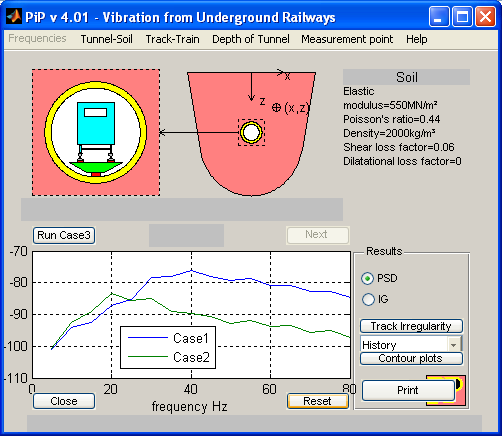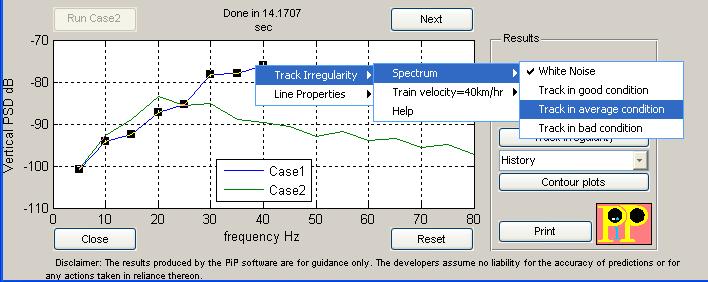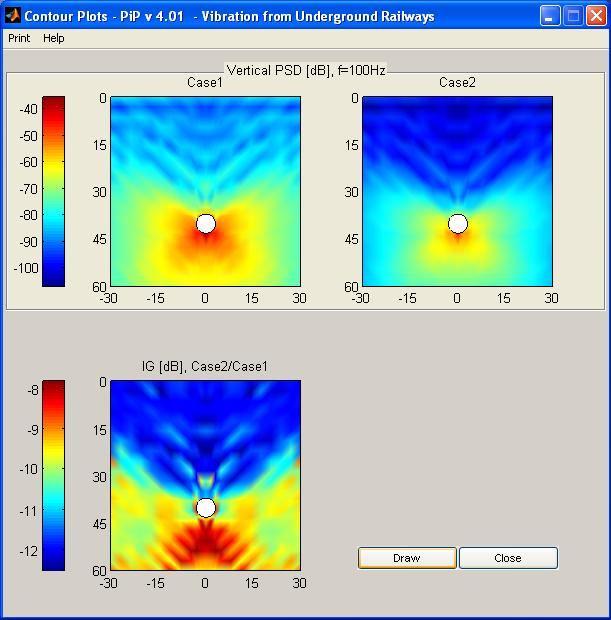![]()  Introduction
Background
Features
History
Downloads
About us
Introduction
Background
Features
History
Downloads
About us
|
|
PiP: a software for calculating vibration from underground railways
Developed by: Dr. Mohammed Hussein and Dr. Hugh Hunt
PiP software is used to calculate vibration from a moving train on a slab track mounted at the bottom of a tunnel embedded in half space. The software interface is shown in Figure 1. The user can use the default parameters or can enter the appropriate parameters for the soil, tunnel, floating-slab track, the train, and the coordinates of point in the soil where the vertical displacement Power Spectral Density (PSD) is required. The software also calculates the Insertion Gain (IG) which is the ratio between the PSD displacement after and before changing parameters of the track, tunnel or soil.

Figure 1. PiP software
The software performs the calculations for a white-noise spectrum of the rail at first. The user can also obtain the PSD for typical rail roughness, see Figure 2, according to the condition of the rail; whether it is in its bad, average or good.

Figure 2. Selecting roughness spectrum
The software also produces contour plots for the vertical PSD displacement around the tunnel at a fixed frequency, see Figure 3 below.Results are shown in a 2D plane perpendicular to the tunnel longitudinal axis due to an infinitely-long train running in the tunnel at a constant frequency f.
The constant frequency f corresponds to a fixed wavelength (k=v/f) of the rail roughness, where v is the train velocity. The IG Contour Plot is a direct measure of the isolation performance at a particular frequency.

Figure 3. Contour Plotting of vibration around a tunnel
|

![[Univ of Cambridge]](http://www.cam.ac.uk/sites/www.cam.ac.uk/files/logo.png)